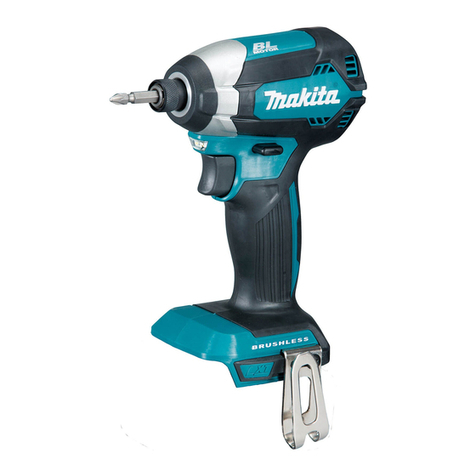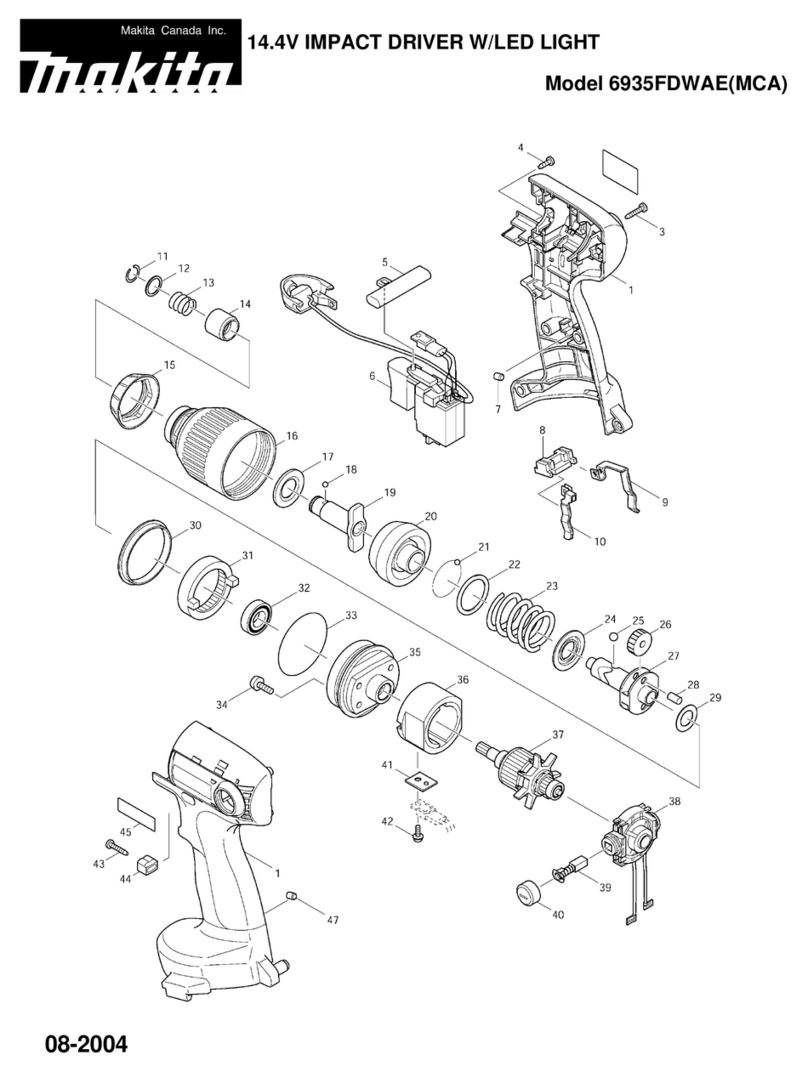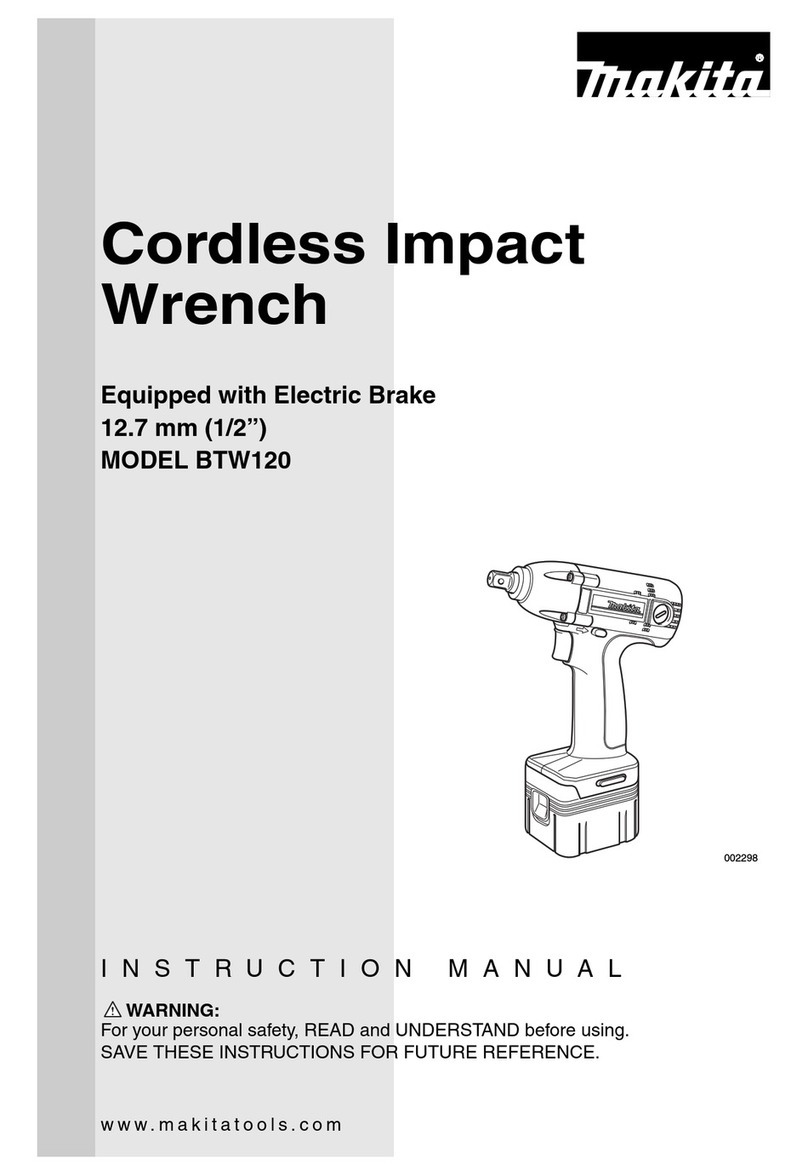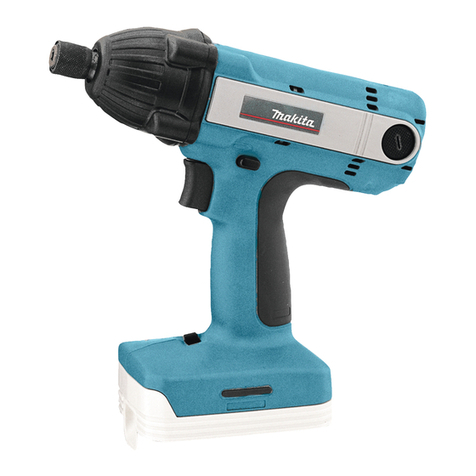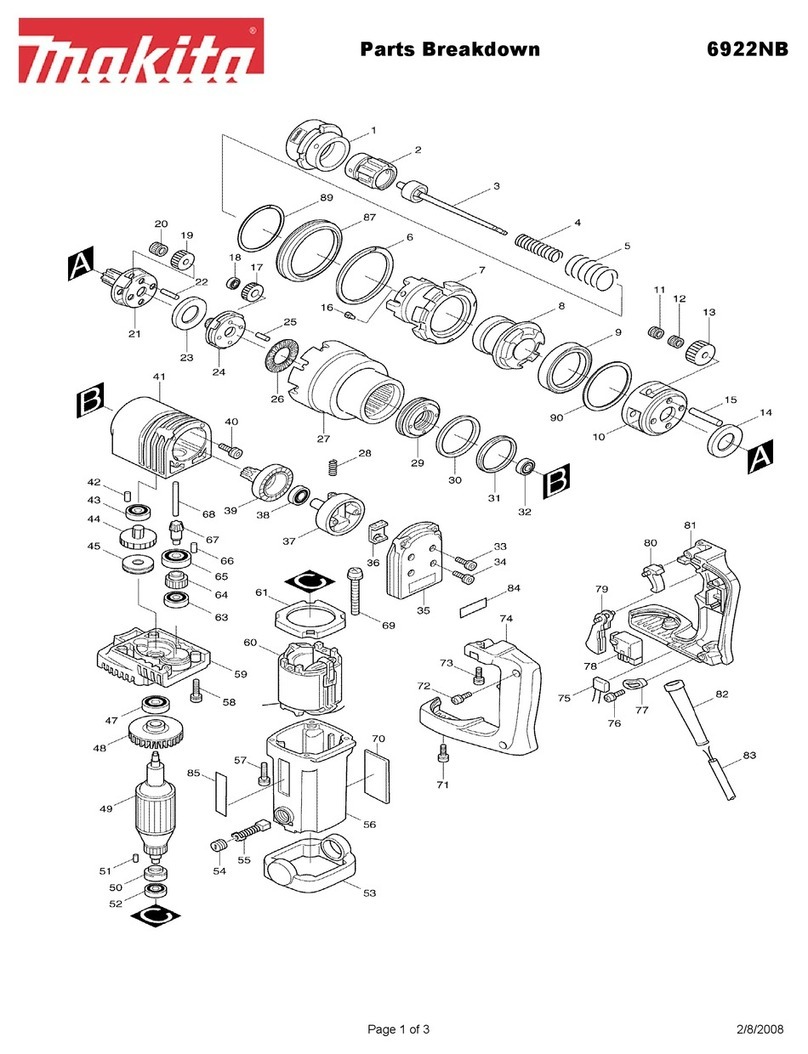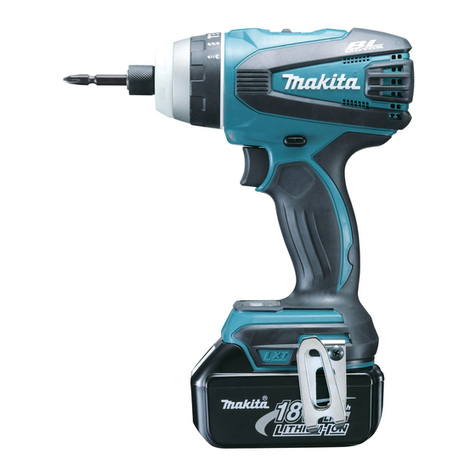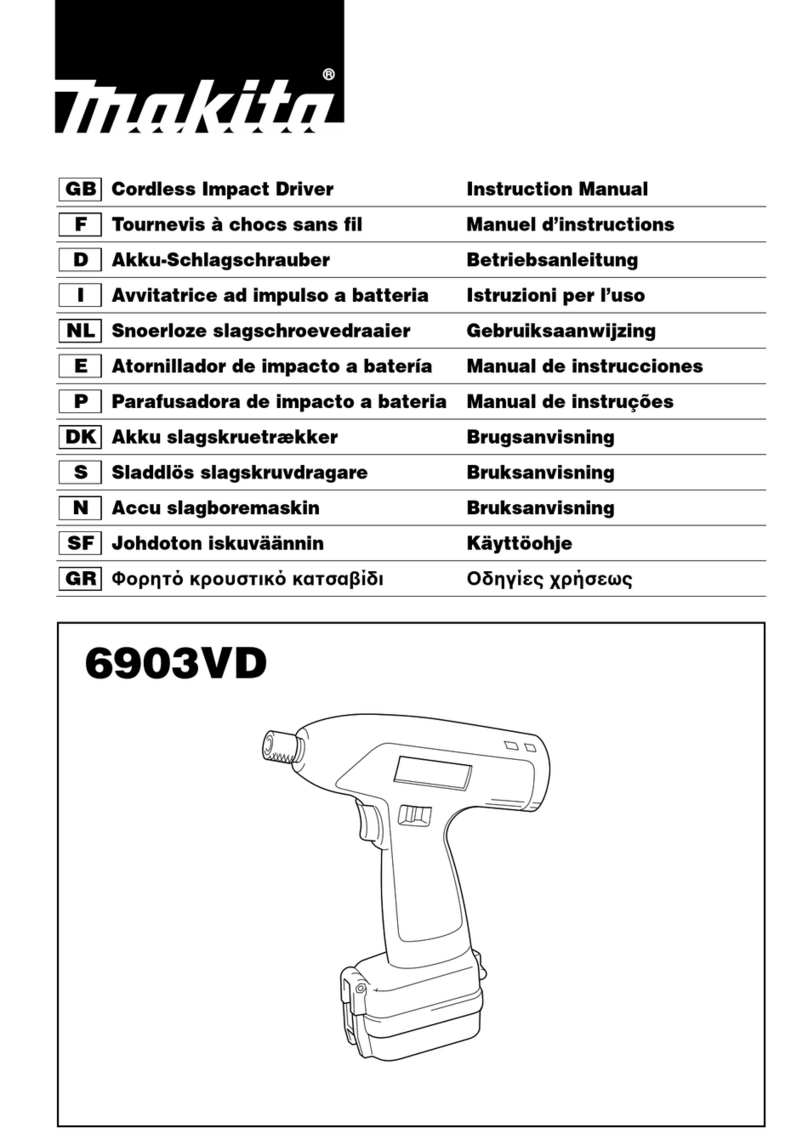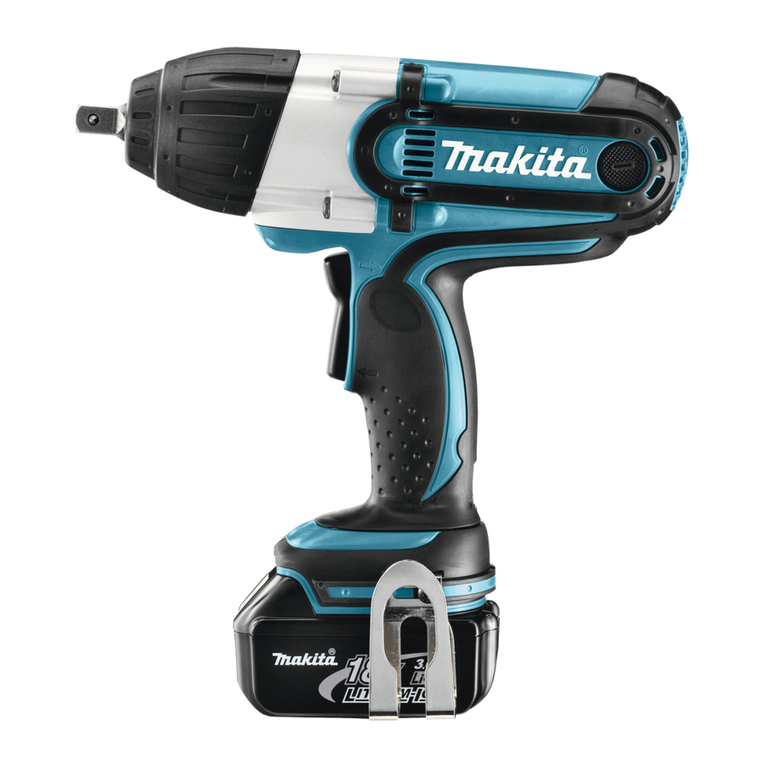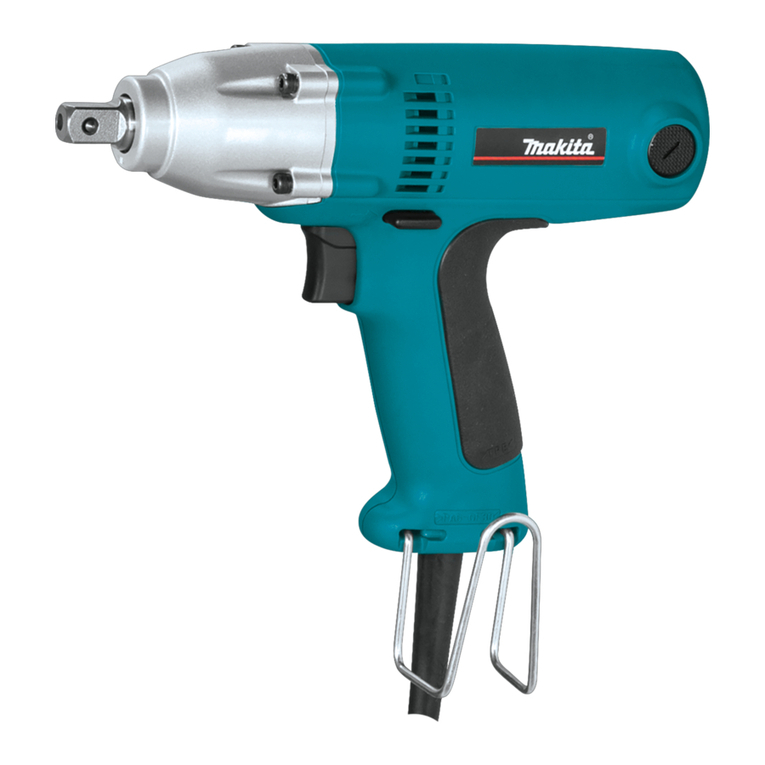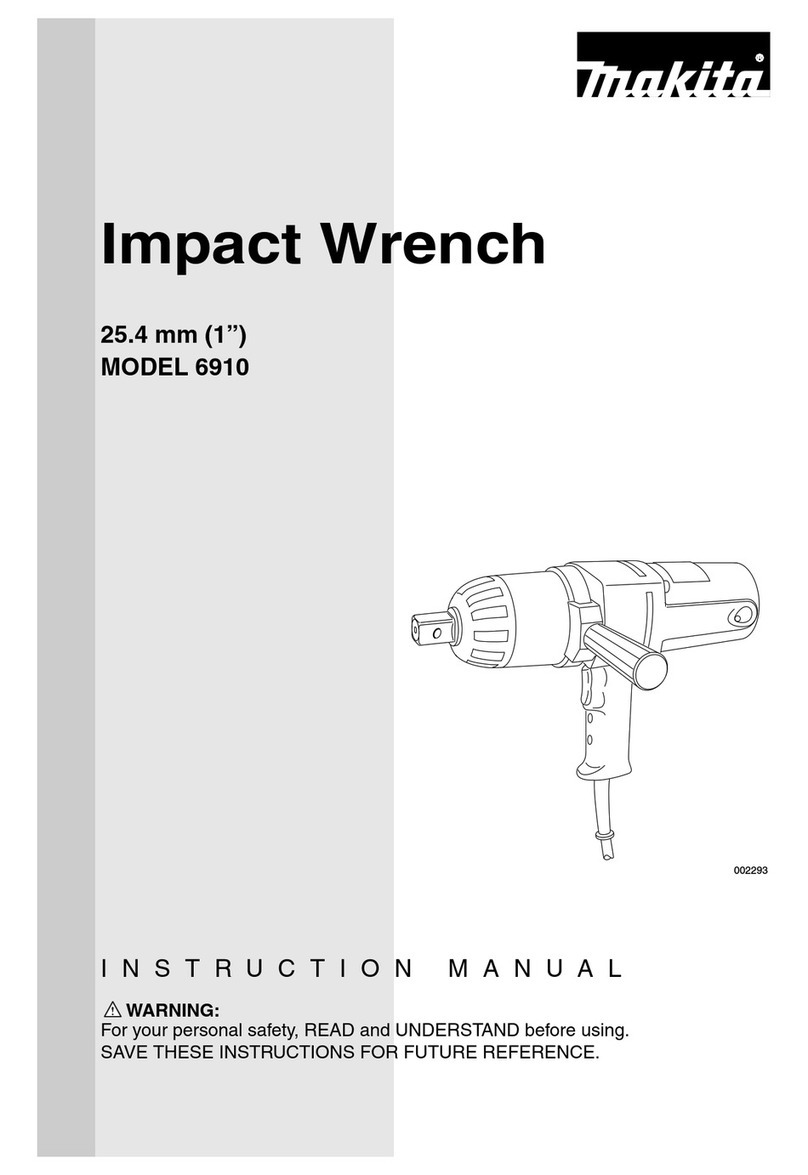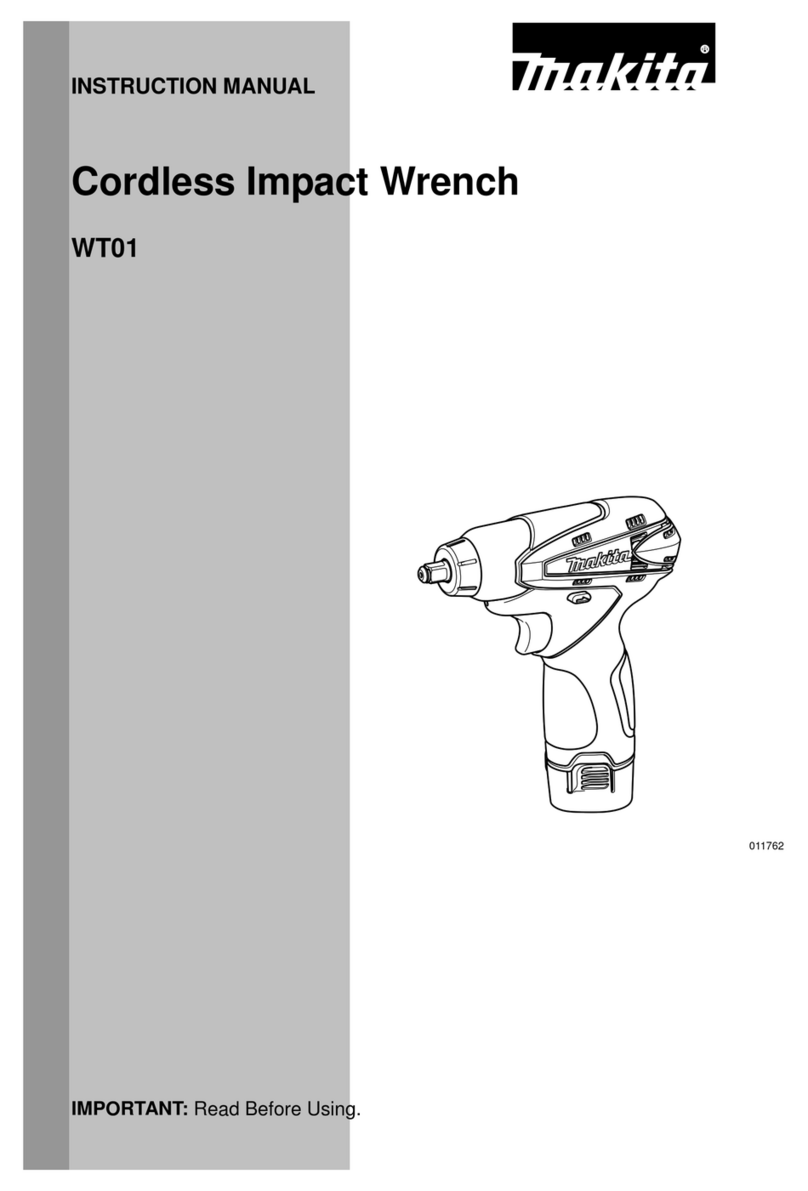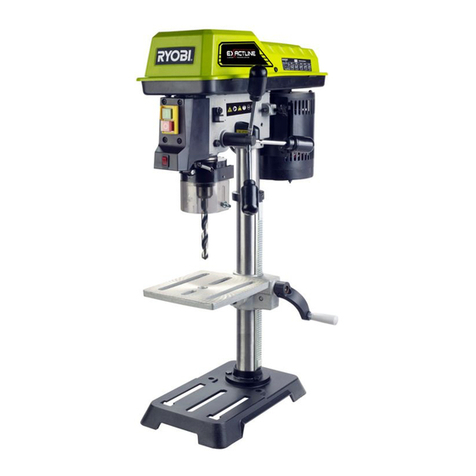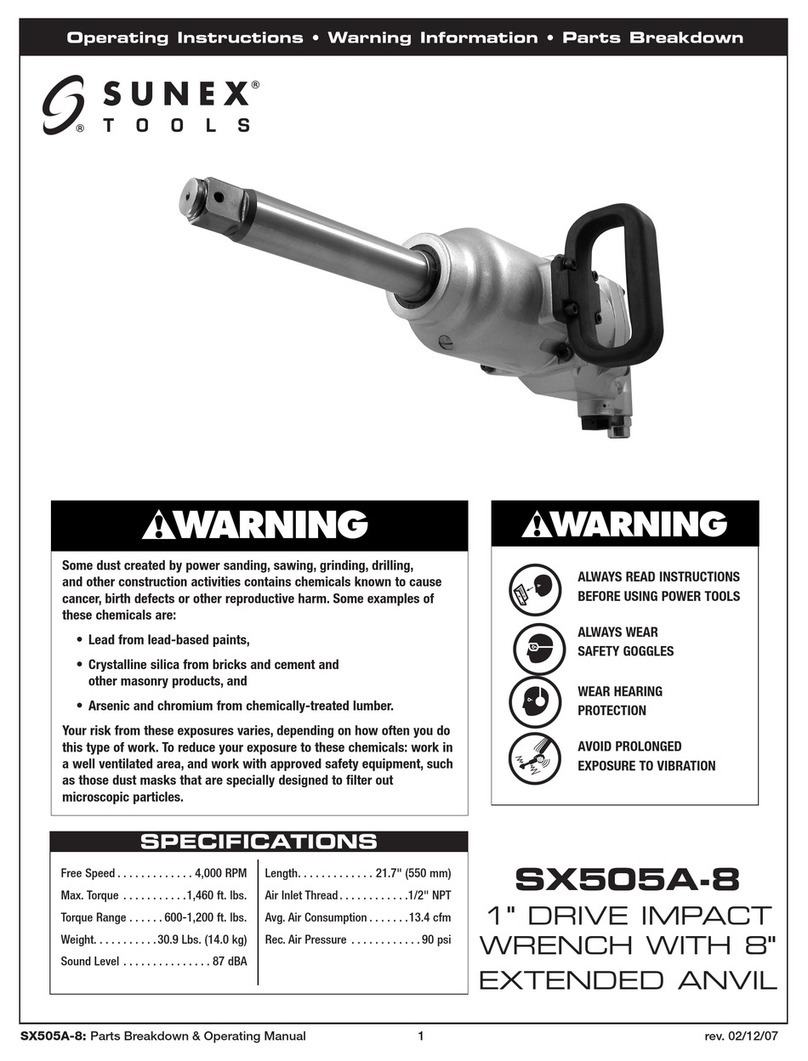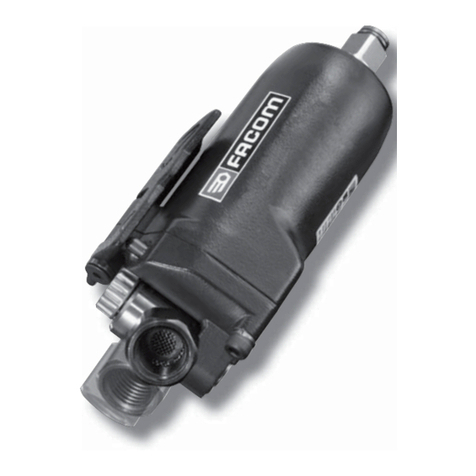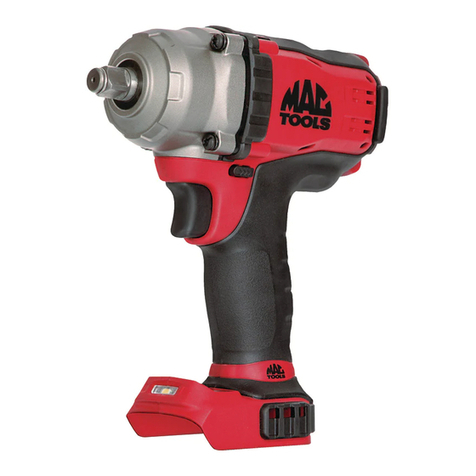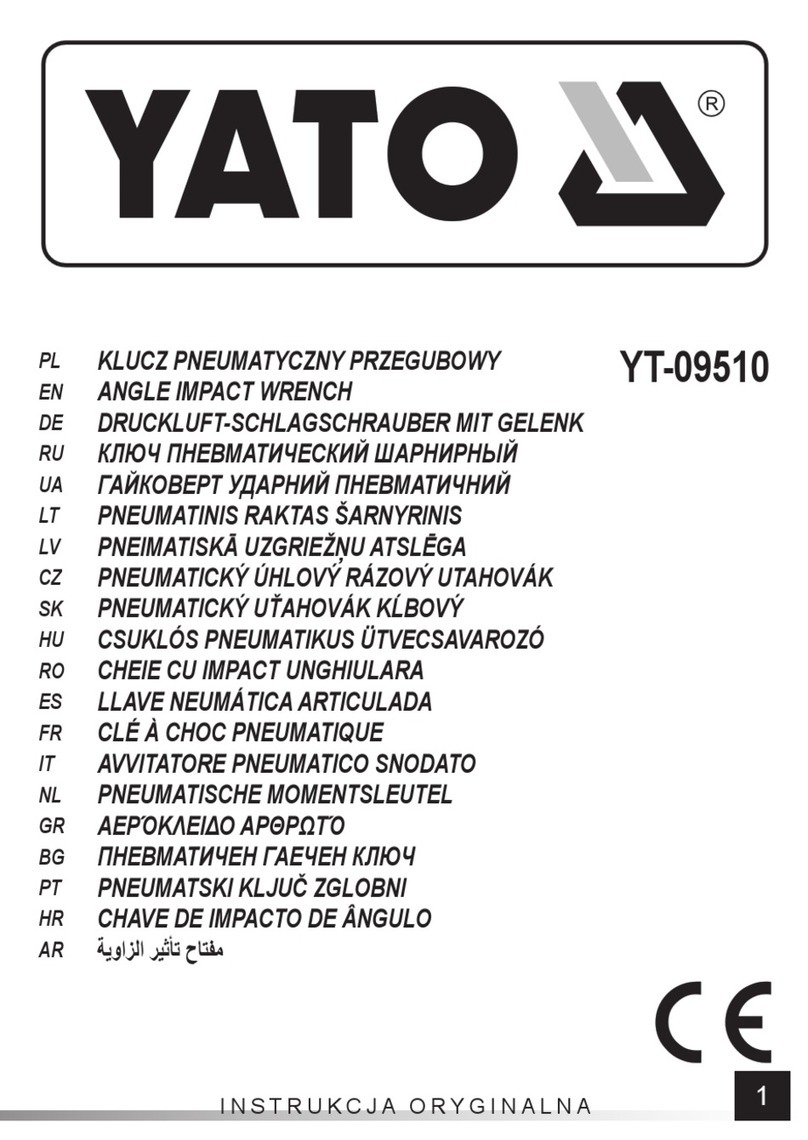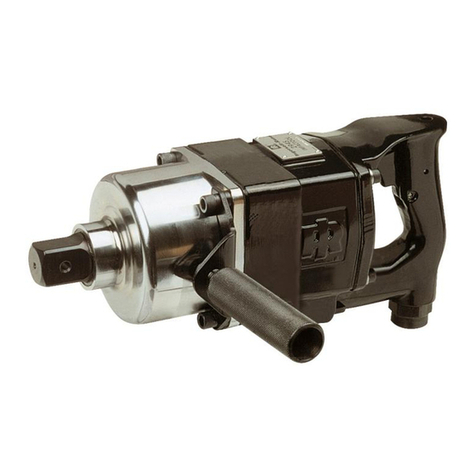
Battery...........................1 or 2*5
Plastic carrying case.....1*7
CONCEPT AND MAIN APPLICATIONS
Model DTS141 is a cordless oil-pulse driver powered by 18V Li-ion battery
and more compact and lightweight than the current model DTS130 thanks to
the newly-developed oil unit and brushless motor.
Its other main features are:
• "T" mode: Tightening mode for self-drilling screw and bolts
• Electronic 3-stage impact power selection
with variable power control in each range
• XPT (eXtreme Protection Technology) for use in outdoor
applications or harsh environments
This product is compatible with 18V-1.3Ah/ 1.5Ah/ 2.0Ah/ 3.0Ah/ 4.0Ah/ 5.0Ah
Li-ion batteries BL1815/ BL1815N/ BL1820/ BL1830/ BL1840/ BL1850.
*1 With battery BL1830/ BL1840/ BL1850
*2 With battery BL1815/ BL1815N/ BL1820
W
L
H
Belt clip............................... 1 Battery cover..................1*6
Charger................................ 1*5
*5: Battery and charger are not supplied with “Z” model.
*6: Supplied with the same quantity of extra battery.
*7: Only for model with battery and charger.
Note: The standard equipment may vary by country or model variation.
Standard equipment
Phillips bits, Square bits, Socket bits
Battery protectors
Four port multi charger DC18SF
Automotive charger DC18SE
Battery BL1820
Battery BL1850
Optional accessories
Dimensions: mm ( " )
Length (L) 136 (5-3/8)
Width (W) 79 (3-1/8)
Height (H) 240 (9-1/2)*1
223 (8-3/4)*2
Battery
Voltage: V 18
Capacity: Ah 1.3/ 1.5/ 2.0/ 3.0/ 4.0/ 5.0
Energy capacity: Wh 24/ 27/ 36/ 54/ 72/ 90
Cell Li-ion
Charging time (approx.): min. 15/ 15/ 24/ 22/ 36/ 45 with DC18RC
Max output (W) 280
Driving shank: mm (") 6.35mm (1/4") Hex
Capacities
Machine screw M4 - M8 (5/32 - 5/16")
Standard bolt M5 - M8 (3/16 - 5/16")
High tensile bolt M5 - M6 (3/16 - 1/4")*3
Coarse-thread 22 - 125mm (7/8 - 4-7/8")
Impact power selection Electronic 3 stages (Hard/ Medium/ Soft) + "T" mode*4
Impacts per min.:min.ˉ¹=ipm Hard/ Medium/ Soft 0 - 2,700/ 0 - 2,200/ 0 - 1,400
No load speed:min.ˉ¹=rpm Hard/ Medium/ Soft 0 - 3,200/ 0 - 2,000/ 0 - 1,200
Max. tightening torque: N.m [ft.lbs] (in.lbs) 40 [30] (355)
Electric brake Yes
Variable speed control by trigger Yes
Reverse switch Yes
LED job light Ye s
Weight according to
EPTA-Procedure 01/2003: kg(lbs) 1.2 (2.7)*2/ 1.5 (3.2)*1
*3 Can be used in "T" mode or soft mode. If used in medium or hard mode the tool may stop for tool body protection.
*4 Tightening mode for self-drilling screw and bolts
Belt clip
Fast charger DC18RC
Charger DC18SD
Battery BL1815
Battery BL1830
Tool catcher
Two port multi fast charger DC18RD
Charger DC24SC
Battery BL1815N
Battery BL1840
PRODUCT
P 1/ 11
Model No.
Description Cordless Oil-Pulse Driver
DTS141
TECHNICAL INFORMATION
Specication
OFFICIAL USE
for ASC & Sales Shop

